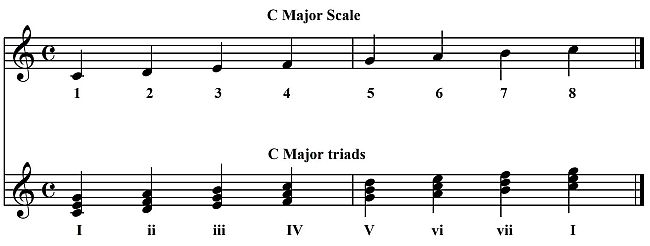How to Add Chord Substitutions to Hymns: Lesson One
Sunday, July 14th, 2013I absolutely love adding chord substitutions to hymns! Chord substitutions add extra color and variety to gospel songs which normally contain infrequent chord changes.
Would you like to learn how to revitalize hymns like “Revive Us Again”? This particular hymn uses the same chord for at least four measures in a row!
Listen to the following audio of “Revive Us Again” with chord substitutions.
You need to have the Audio Player Plugin installed to use this shortcode
So…what does the pianist need to know in order to add chord substitutions?
Let’s take one step at a time!
What Every Pianist Should Know BEFORE Adding Chord Substitutions:
1. A major scale is made up of 8 notes. For example, the C Major scale is made up of the following eight notes: CDEFGABC
2. So, each note of the scale is numbered one through eight. For example, C is one, D is two, etc. Now…create a three note chord (triad) on each note of the scale. Play CEG together. We call this the one chord because it’s built on the first note of the C scale. Now play DFA together. Yes, you’re playing the two chord in the key of C. Finish playing the rest of the C scale based triads until you reach the following C.
Here is a picture of what you should have played so far: C scale and then the C scale chords (triads). *Notice, the chords are numbered with the Roman numeral system. The upper case roman numeral indicates major chord, the lower case roman numeral indicates minor chord. For you theory buffs, I left out the diminished symbol for the vii chord….will explain that later.
You have learned the first foundational tool needed for adding chord substitutions. Application: Play the above scale and chords in the keys of G and F Major for ample reinforcement. * I chose easier scales for a reason….let’s keep life simple for now 😉
Hope this lesson has been clear thus far. Please feel free to ask any questions!
Just be patient with yourself and learn this basic step towards colorful playing! I’ll explain more in the next post.
